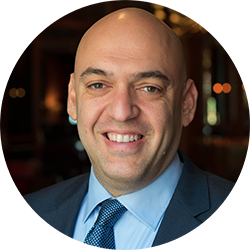When a lawyer’s client is charged with felony assault with a deadly weapon under penal code section 245(a)(1), they are facing a “strike” under California’s Three Strikes law. Assault with a deadly weapon is what I call a “mega-wobbler” – it can be charged as either a strike felony or it can be charged as a misdemeanor. Of course, if filed or convicted of a misdemeanor, the charge is not a strike. If your client is facing a felony 245(a)(1) and there’s no hope of breaking it down to a misdemeanor, he or she may get a probationary sentence, there may even be a “no time” offer where your client must only perform community labor or community service. However, the downside is that the prosecutor may seem unwilling to change the charge, which would leave your client with a strike.
What to do? You may be thinking “well, you take the case to trial!” Of course, trial is always the point every real criminal defense attorney should start from, and you may very well need to push to trial to get the best result. Now let’s presume that you really don’t have a good case to take to take to a jury, and you have a client who wants the matter settled. What then? Triable case or not, nobody should plead their client to a strike if it can be at all avoided.
If a deadly weapon is used by your client in the assault, then the offense is a strike whether great bodily injury was sustained or not. However, if no great bodily injury was sustained by the complaining witness, and the prosecution is not alleging as such, then the one way to get around the strike problem is to “take the weapon out of the client’s hand.” Penal Code § 245(a)(1) reads as follows:
“Any person who commits an assault upon the person of another with a deadly weapon or instrument other than a firearm or by any means of force likely to produce great bodily injury shall be punished by imprisonment in the state prison for two, three, or four years, or in a county jail for not exceeding one year, or by a fine not exceeding ten thousand dollars ($10,000), or by both the fine and imprisonment.”
Look at the statute carefully. Notice how there is a distinction between an assault with the use of a deadly weapon and an assault by any means of force likely to produce great bodily injury. The phrase “by any means of force” does not mean that a weapon needs to be involved. If a person sustains a felony conviction under this section for using a deadly weapon in the commission of the assault, then the conviction will be considered a serious felony under Penal Code § 1192.7(c) and a “strike.” However, if they are charged with felony under this section for using “force likely to produce great bodily injury” with no allegation that great bodily injury was actually sustained, then the offense is not a strike. This principle was most recently upheld again in People v. Feyrer (2010) 48 Cal. 4th 426.
Bottom line: If your client has no practical choice but to plead guilty to a felony on this charge, at least you may be able to get rid of the strike.
Jerod Gunsberg is a Los Angeles criminal defense attorney who handles serious and violent felonies as well as all criminal matters in and around the Los Angeles area. If you have a legal problem, contact Jerod at (323) 633-3423 or via the secure contact form on this page for a confidential consultation.

